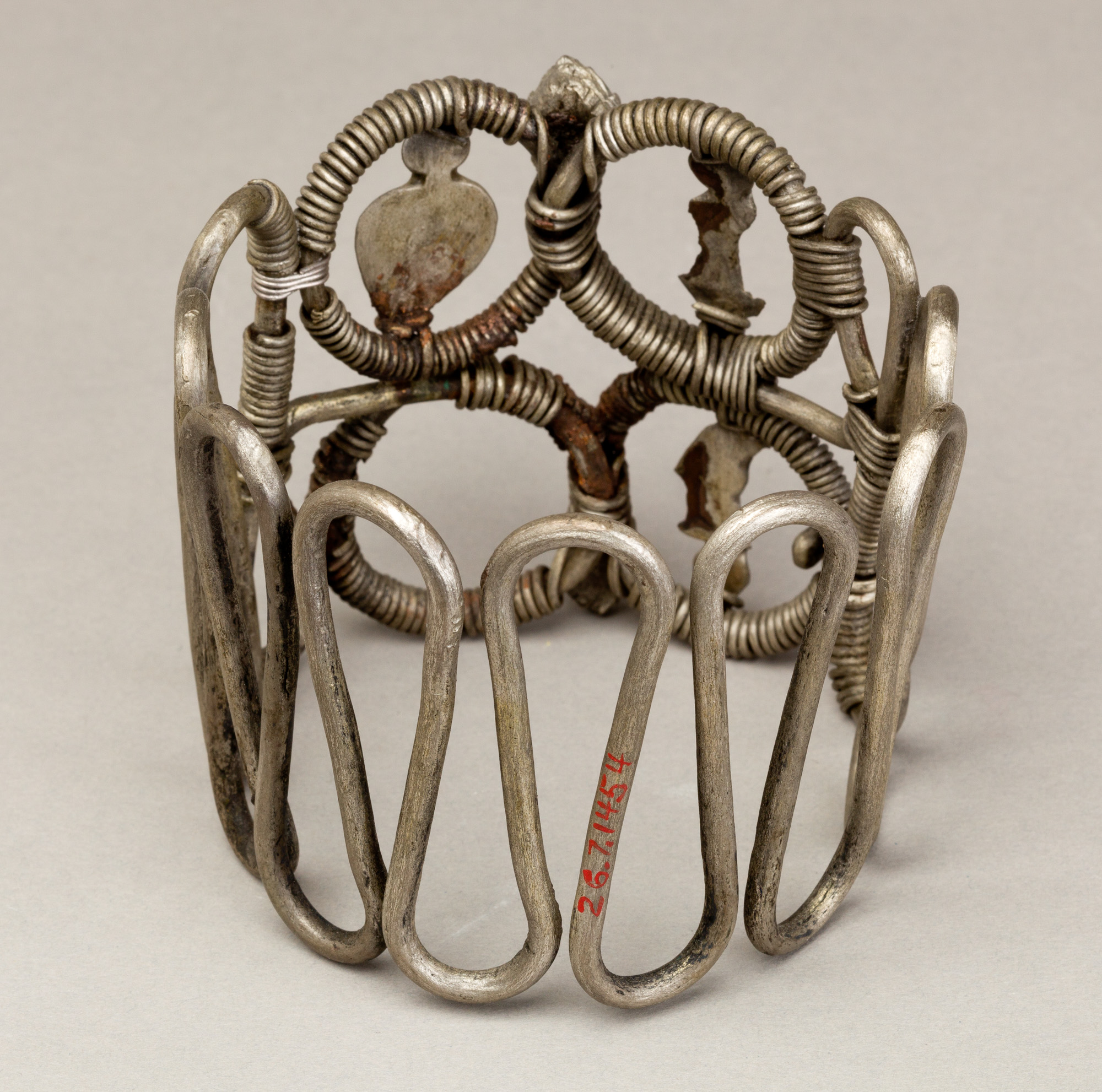Bracelet or armlet with uraei
Roman Period
This wire bracelet was found with a deposit of silver jewelry inside a clay jar at Tell el-Balamun, a site in the Egyptian Delta. The jewelry may have been an early Roman Period hoard, buried for safekeeping but never retrieved.
The bracelet is constructed from two thick wires bound together using a thinner wire, which serves both to join the pieces and to create a looped decorative pattern. Four silver rearing cobras, known as uraei, were secured to the front, although one is now missing, and two snake heads pointing up and down were carved into the hammered tips of the thicker wires. The bracelet could be produced without using any heat or soldering technologies.
Snake iconography in adornment, such as in the piece seen here, was prevalent during the early Roman Period, although double snake bracelets are attested in Egypt as early as the end of the 3rd century BC. Funerary representations of snake bracelets are seen as symbols of rebirth, as snakes frequently shed their skin. Snake iconography was also associated with the cult of Isis, who was believed to help the dead enter the afterlife.
This image cannot be enlarged, viewed at full screen, or downloaded.
This artwork is meant to be viewed from right to left. Scroll left to view more.



